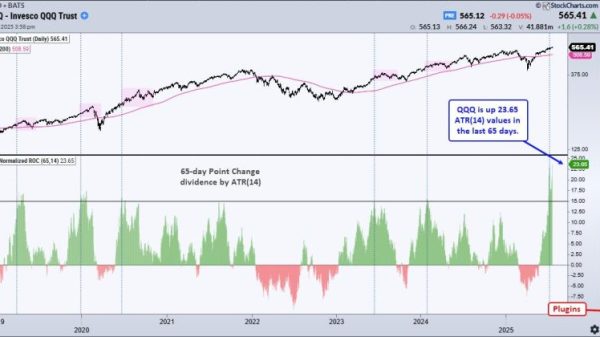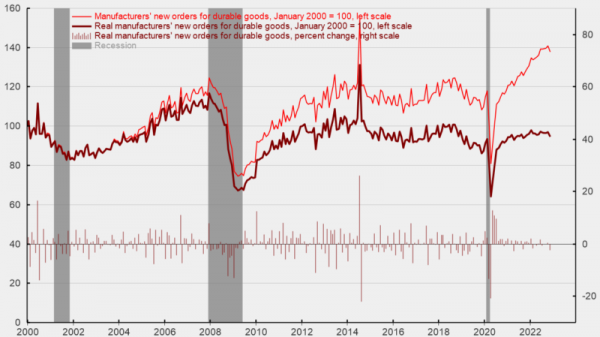
After the final lecture of my Fall 2022 International Economic Policy course (an undergraduate offering meant to introduce non-economics majors to the economics of international trade) a student confessed to me his lingering confusion about the principle of comparative advantage. This principle, famously identified in 1817 by David Ricardo, is a key reason why individuals, regions, and nations specialize in producing some particular goods and services, while acquiring other goods and services through commercial exchange with other producers.
The student correctly observed that Americans today both import and export automobiles: “This fact,” the student said, “seems to be inconsistent with comparative advantage. If we import automobiles, doesn’t that mean that foreigners produce automobiles at lower costs than we do and, thus, have a comparative advantage over us at producing automobiles? But if foreigners have such a comparative advantage over us at producing automobiles, how is it that we’re also able to export automobiles?”
The student’s confusion and questions are understandable, and demonstrate that I should have explained comparative advantage with greater care.
Diversifying Sources of Supplies Is Often Worthwhile
One reason a country might both import and export a particular kind of good (or service) is that producers often diversify their sources of supplies. Producers do so rationally. Diversification of sources of supplies better ensures that producers will not be without adequate access to inputs if one particular source dries up.
American as well as foreign automakers might, for example, purchase American-made tires from Goodyear and also foreign-made tires from Michelin. The demand for a diversity of supply sources results in producers in different locations each having comparative advantages. Even if, say, Goodyear cannot produce tires at a cost quite as low as can Michelin, the fact that Goodyear is a different company operating in a different geographical and political location gives to Goodyear tires a market value that more than compensates for Goodyear’s higher costs of producing tires. Goodyear’s comparative advantage, in this example, is made possible by its factories being located in different places than are Michelin’s factories.
There is at work here another comparative advantage worth noting. Private companies have a comparative advantage over governments at achieving ‘optimal’ diversification of supply sources. Private-company executives not only have intimate knowledge of the industries in which they operate (knowledge not possessed by government officials), private-company executives also have singularly powerful incentives to assess correctly the costs and benefits of diversifying supply sources. They are motivated to diversify up to the point, but not beyond, where the costs of further diversification of supply sources outweighs the benefits.
Private-company executives might, and sometimes do, err in assessing the costs and benefits of diversifying their sources of supplies. But their chances of erring are much lower than are the chances that government officials will err if decisions about supply-source diversification are seized from the private sector by the state.
Words Are Not the Things They Describe
Sometimes, however, what appears to be a country’s simultaneous exportation and importation of the same good is merely a mental mirage created by the enormous simplification used in introductory explanations of comparative advantage. While in reality the different kinds of tradable goods and services number in the billions, in the classroom we introduce students to the principle of comparative advantage with the simplifying assumption that the number of such goods is only two.
This simplification is necessary to render the introductory explanation intelligible. The logic that is revealed by understanding what it means for one party to have a comparative advantage at producing, say, bananas, while a second party has a comparative advantage at producing fish, is perfectly generalizable to ever-greater numbers of goods and services (and, also, to ever-greater numbers of trading parties). But teaching comparative advantage by starting with billions of (or even only three or four) different kinds of outputs would cloud the introduction with distracting complexities. Comparative advantage’s all-important logic would be hidden.
Applying the simple classroom explanation to the always-complex real world requires some care and wisdom. The labels used in teaching economics never fully capture economic reality’s nuance and complexity. For example, the word “automobiles” covers dozens of different kinds of motor vehicles, including economy cars, luxury sedans, pick-up trucks, and many different styles and sizes of SUVs. Producers in one country might have a comparative advantage at producing luxury sedans, while producers in another country have a comparative advantage at producing economy cars. If so, each country will likely be both an importer and an exporter of “automobiles” (with the first country producing and exporting luxury sedans as the second country produces and exports economy cars). This situation is in no way at odds with comparative advantage, properly understood.
A second important real-world complexity (often usefully ignored in introductory explanations of comparative advantage) is that the greater the quantity per period of time that an economic entity (say, a country) produces of some particular output, the higher is that entity’s cost of producing additional units of that output in the same period of time.
For example, General Motors’ US-based factories might have a comparative advantage at annually producing one million units of a particular kind of pick-up truck, but not at producing the one-millionth-and-first unit. If Americans’ annual demand for this particular kind of pick-up truck is sufficiently high, G.M.’s US factories might satisfy the annual demand for the first million units, while American buyers’ annual demands for this truck in excess of one million are satisfied by automakers located in Canada or Japan. Under these circumstances, imports of that kind of pick-up truck into America would be consistent with G.M.’s US-based factories having a comparative advantage at annually producing the first one-million units, and with non-American automobile factories having the comparative advantage at annually producing units greater than one million.
A more-general lesson here is that more than mere textbook mastery is required to usefully squeeze improved understanding of reality from economic theories. Also required is wisdom. Theorizing about reality is necessary to gain understanding. But when we theorize we unavoidably simplify, a fact that’s true at all levels of analysis, from Econ 101 to Econ 999 and beyond. We use words that mask the real-world details of the things or actions that the words describe. We use graphs, equations, and statistics that inevitably do the same. Taking these words, graphs, mathematical symbols, and statistical classifications literally generates a heady-but-false sensation of grasping reality with a fullness that, in fact, is impossible.
Words and other tools of theorizing are indispensable for coherent thought, but they are not the actual phenomena to which they refer in reality. Those phenomena, especially in the social sciences, are nearly always inconceivably more complex and fluid than they are made to appear by our words and other theoretical tools.
Theorizing usefully about trade and other economic phenomena isn’t especially difficult, but doing so does indeed require care, wisdom, and humility.





























